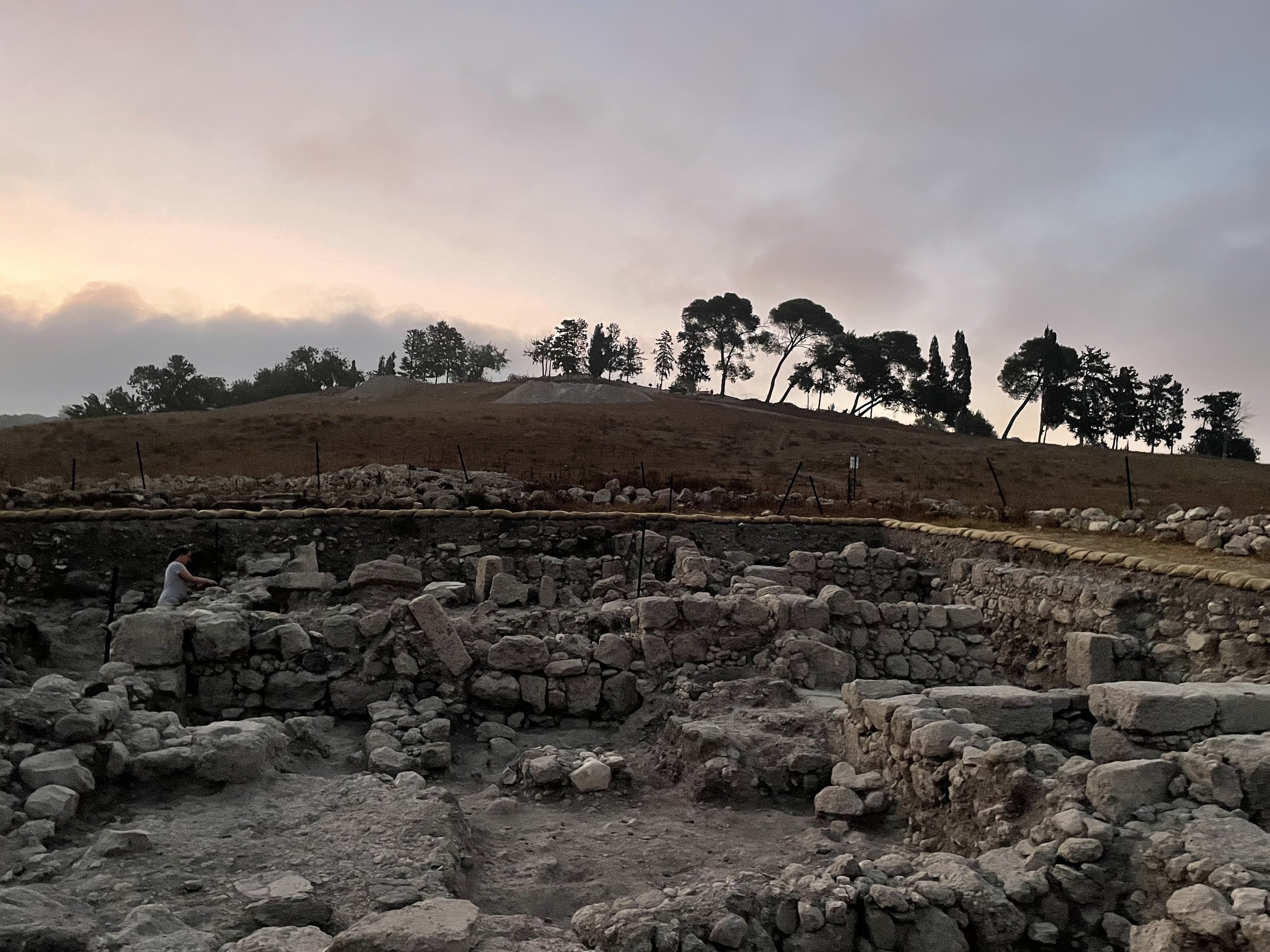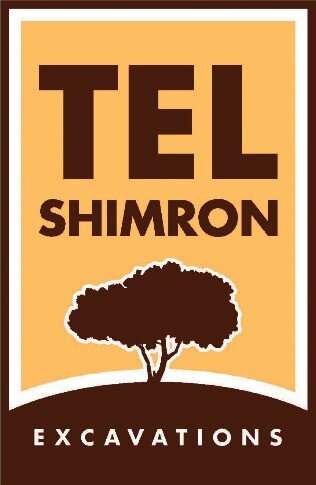
Persian Period Research Questions
By Kathleen J. Birney
The annals of Tiglath Pileser III (Rost 1893:38-229-234, Pl. XVIIIb) describe significant depopulation in the area of the Jezreel and the Lower Galilee in the 8th century, in actions that may have included the deportation of the occupants of Tel Shimron itself (Na’aman 1986a:73). A series of surveys carried out by Gal have demonstrated the lasting effect of the Assyrian policies in that both the Jezreel and the Lower Galilee remained sparsely settled even into the Persian period (Gal 1992). Persian period reoccupation throughout the region has been documented almost exclusively at strategic sites situated high on the hills, chosen in order to control the major transit corridors into and across the Jezreel: for example Nahal Tut (Alexandre 1996) and ‘En Hofez (Alexandre 1997) controlling the Wadi Milkah pass into the valley over the Carmel, Megiddo and Yoqne’am (Cimadeville 2005) along the southern edge of the valley overlooking the coastal road, etc.
Urbanization or Attenuation: The preferential settlement of sites with strategic vantage points, and proliferation of rural agricultural sites in the Jezreel Valley coincides with a pattern recognized within Judah which Lipschits characterizes as an “attenuation of urban life”. All of the major sites throughout the region, he argues, “were either purely military or administrative,” and “function[ed] without any cooperation from the local population” (2006:28). Stern is critical of this view, arguing that this perception is an accident of evidence, the result of preferential excavation of acropoleis while residential areas on the outskirts of the site tend to be overlooked (2001:461-2). Portugali’s (1982) survey at the site suggested the presence of a substantial building he described as a Persian period “fort” on the acropolis, which would likely have served as the northern counterpoint to Yoqne’am and controlled the pass from the Jezreelinto the Bet Netofah and Lower Galilee. Alongside this Persian “fort”, Feig’s (2007) salvage excavations immediately adjacent to the Zarzir-Nahalal junction, revealed a Persian period building with several rooms. It is as yet unclear whether this occupation reflects a true part of Tel Shimrom or a secondary administrative building more closely tied to the agricultural life of the valley. Systematic excavation planned in areas on the acropolis as well as at several points across the tel will determine whether urban life flourished on Shimron’s lower slopes, or whether the site functioned exclusively as an imperial center.
Economy: Coastal Connections: Greek pottery, in the form of Attic black glazed wares, is often treated as synechdoche for coastal (and therein Phoenician) connections in the Persian period. It is significant that despite the proximity and accessibility of the Acco plain, only relatively small quantities of Attic pottery have been published from the Jezreel, and virtually none from lowland (i.e. valley floor) sites, even from salvage. This picture, coupled with the presence at Sepphoris of an Achaemenid-inscribed Greek vase (Stolper 1997: 166) has led to the suggestion that in those regions outside of direct Phoenician influence, trade with the coast did not evolve organically but was instead imperially facilitated and managed (Meyers and Meyers 2009). An analysis of Tel Shimron’s Persian period imports (not gauged merely by Attic materials, but also by the presence and relative quantities of Phoenician imported wares) will offer an enhanced picture of the materials traveling through the Jezreel at this time. Our previous petrographic work at the coastal city of Ashkelon and close cooperation with the Levantine Ceramics database will together provide a broad range of comparative material/data against which such a study can be carried out.
Economy: Agriculture: Although the regional tax base was almost certainly agrarian, the nature and extent of Achaemenid control over the processes and organization of agricultural production in the Jezreel remain unclear. Individual villages may have been left to their own devices provided they offered up the requisite tax; alternately, the region may have been directly controlled and administered by the crown. Two Hellenistic texts, the Zeno Papyri and the Hefzibah inscription (Landau 1966) offer possible models for imperial administration in the form of land-grants that could also have been employed under the Achaemenids. The existence of Persian period burials on the valley’s east end, coupled with the appearance of Persian period pottery in fills from salvage excavations throughout the valley certainly confirm robust use of the land during this period (Afula: Gal and Covello-Paran 1996; Horvat Decora: Cinamon 2010a, Sulam: Cinamon 2010:b; Qashish: Ben-Tor 2003, inter alia.) Administrative centers such as, potentially, Tel Shimron, may offer a means to more substantial analysis. For both the Persian and Hellenistic periods, Shimron’s botanical assemblage can be compared not only against other Persian administrative and military sites, but also against the broader botanical profile of the valley presently being assembled through the work of the Jezreel Valley Regional Project. Comparison of these remains has the potential to shed light on agricultural practices, strategic crop diversity and yields that might also indicate the degree of centralized oversight, and ultimately to offer a window on the nature and degree of Achaemenid control of the agrarian economy.
Bibliography
Alexandre, Y. 1996. “Nahal Tut (Site 8).” ESI 15: 49–50.
______ 1997. “‘En Hofez.” ESI 16: 53–54.
Ben-Tor, A. 2003. Tel Qashish. A Village in the Jezreel Valley. (Qedem 5). Jerusalem: Hebrew University.
Cimadevilla, M. 2005. “The Persian Period.” In Yoqne’am II: The Iron Age and the Persian Period, (Qedem Reports 6), edited by A. Ben-Tor, A. Zarzecki-Peleg and S. Cohen-Anidjar, 401–21. Jerusalem: Institute of Archaeology, Hebrew University.
Cinamon, G. 2010a. “Horvat Devora .” Hadashot Arkheologiyot.
______ 2010b. “Sulam.” Hadashot Arkheologiyot.
Feig, N. 2007. "Tel Shimron." Hadashot Arkheologiyot – Excavations and Surveys in Israel. 119.
Gal, Zvi. 1992. Lower Galilee During the Iron Age. American Schools of Oriental Studies Dissertation Series 8. Winona Lake, IN: Eisenbrauns.
Gal, Zvi, and J. Covello-Paran. 1996. Excavations at Afula 1989. ‘Atiqot 30:25–67.
Landau, Y.H. 1966. A Greek Inscription found near Hefzibah. Israel Exploration Journal 16.1: 54–70.
Lipschits, O. 2006. “Achaemenid Imperial Policy, Settlement Processes in Palestine, and the Status of Jerusalem in the Middle of the 5th century B.C.E.” In Judah and the Judeans in the Persian Period, edited by O. Lipschits and M. Oeming, 19–52. Tel Aviv: Institute of Archaeology.
Meyers, C.L. and E.M. Meyers. 2009. “The Persian Period at Sepphoris.” Eretz Israel 29: 136–44*.
Na’aman, N. 1986. Population Changes in Palestine Following Assyrian Deportations. TA 20: 104–24.
Portugali, Yuval. 1982. “A Field Methodology for Regional Archaeology (The Jezreel Valley Survey, 1981).” Tel Aviv 9/2: 170–88.
Stern, Ephraim. 2001. Archaeology of the Land of the Bible: Vol. II: The Assyrian, Babylonian and Persian Periods (732–332 B.C.C.). New Haven: Yale University Press.
Stolper, M. 1997. “11. Vase Fragment,” In Sepphoris in Galilee: Crosscurrents of Culture, edited by Rebecca Martin Nagy, Carol Meyers, Eric Meyers, Zeev Weiss, 166–67. Raleigh: North Carolina Museum of Art.
